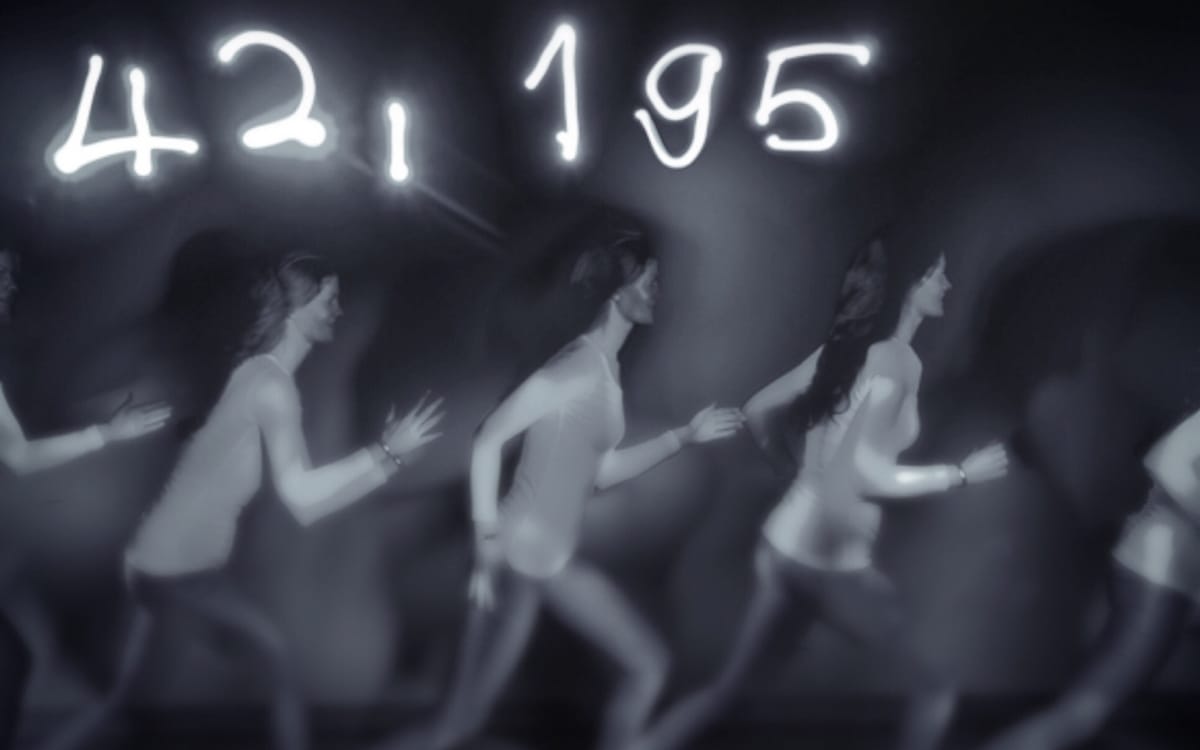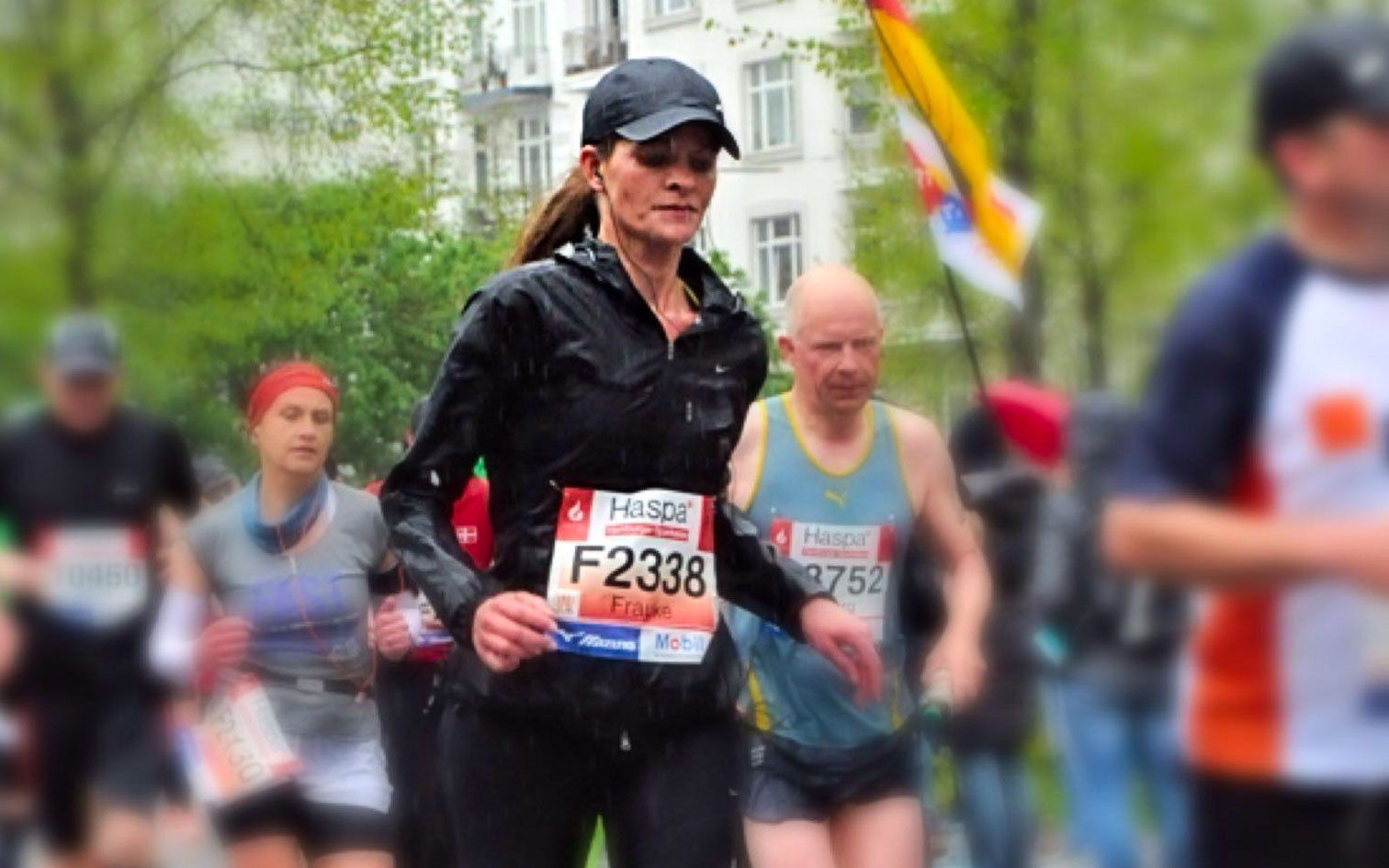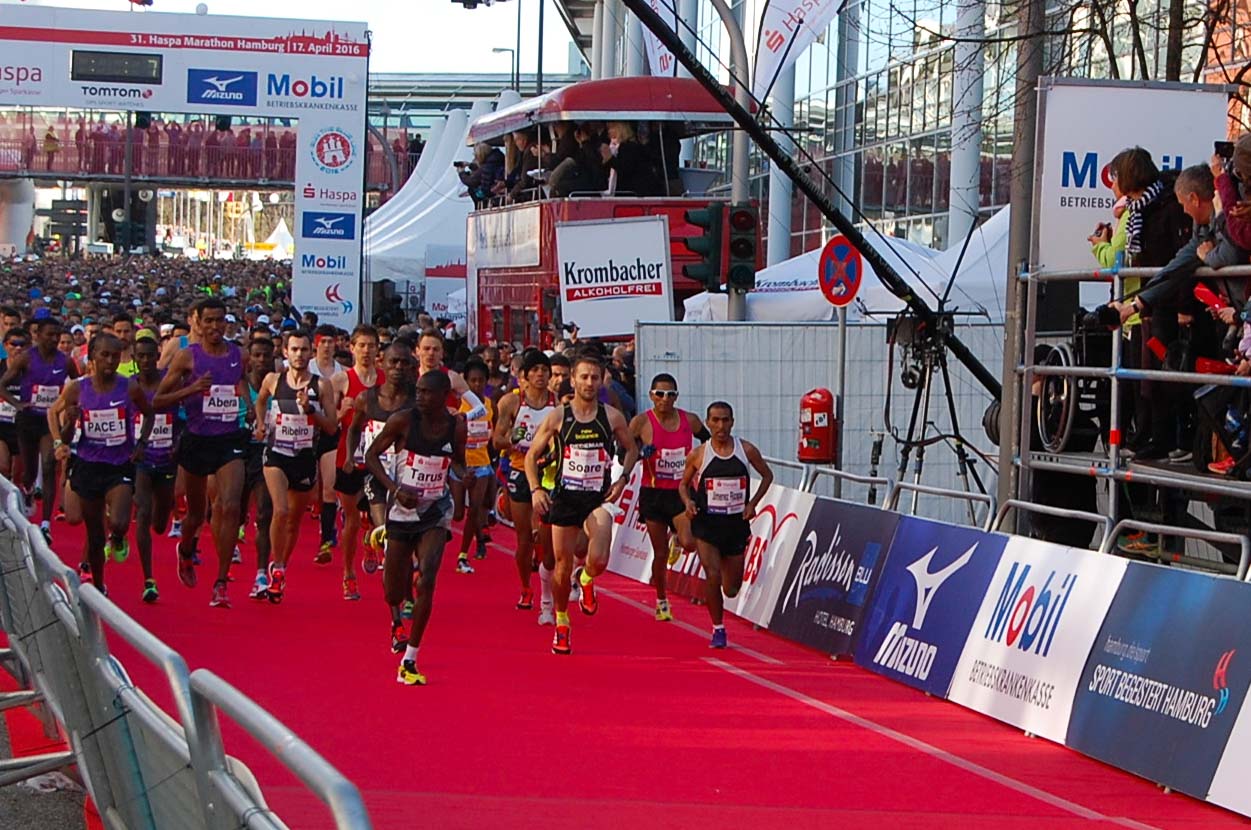Running Heaven Beats Migraine Hell

Frauke Poeschmann had chronic migraine when she found a safe haven. Running. Her attacks dropped from 20 a month to 5 and she felt free, stronger and hopeful, when two years of darkness dissolved.
“Pain is inevitable, suffering optional,” says marathon runner Frauke Poeschmann, summing up her attitude towards her chronic migraine and running passion with a quote.
Speaking with The Outdoor Journal, she says, “It’s so true to my migraine. It will never go away, so I have to live with it. But if I give up, that’s my choice. And it’s the same with running a long distance run. It’s going to be painful. Running 42K is definitely something that you’ll feel in your legs and muscles, but it doesn’t make me suffer, it makes me happy,” she says, adding “Running makes me feel stronger than a stupid chronic sickness.”
When she was 19-years-old, the migraine attacks began. Hitting her 2-3 times a month. She got on prophylactic, but the treatment that prevented the attacks also brought on a depression after a couple of years. In the end of 2012, she quit the medication.
“And that’s when the migraine really hit me,” she says “It’s a headache, but not really a headache like when you haven’t had a lot of liquid or are hung over. It’s actually a really severe pain and when it doesn’t go away when I take painkillers, I feel like taking a knife and stabbing it in my leg, just to feel something else apart from the pain in my head.”
For two years, she had migraine more than every second day, 15-20 times a month. Painkillers kept her functioning at work as a Consumer Insights Manager, but her personal life was badly affected.

“I didn’t go out. My relationship ended. I almost lost friends because I couldn’t connect to anyone so I couldn’t really participate in anything anymore. Couldn’t drink alcohol, couldn’t eat certain things,” she says “So basically I started cocooning in my safe place, which was my couch. It was not really a life worth living.”
Migraine affects people differently. While some people get sick to their stomach, she describes how she gets emotional, very short fused and has problems concentrating or handling people when the attacks kick in. Sometimes she can’t grasp her surroundings: “Even in my own flat, I end up running into my own door,” she says.
But when she turned 30-years-old, she decided that she didn’t just want to run into doors. She wanted to get active and the only thing that she used to enjoy was running. She quit her sedimentary life and hit the 2-3 km tracks outside her flat in the mornings before heading to work. Even though she hated it at first and walked like John Wayne because of aching muscles, her new habit soon turned into a passion that she can’t live without.
“It’s the best idea, I have ever had. To start running and to start running marathons,” she says ”Migraine might not sound that bad, but for those who actually suffer from it, it is quite a pain in the ass. And it is just not there when I run.”

Running is her safe haven where she feels free and clears her mind of worries.
“Migraine works a bit like a computer without spam filter,” she says “I’m genetically missing the spam filter and take everything in. And when I get too stressed, it explodes in my brain. Running is a bit like replacing the spam filter because it unwinds me and relaxes my thoughts and my brain.”
Her migraine attacks also dropped to 5-7 a month when she picked up running and a new treatment: “Botox is doing one part of the job, but I think that running is doing the other one,” she says.
Dr. Katy Munro at the National Migraine Centre has not personally seen a case with such a drastic improvement, but adds: “We do see some amazing results when we have helped patients to find a personalised plan for managing their migraine. Simply eating regularly, not skipping meals and having a bedtime snack can make a huge difference to some people. The regularity is important as the brain of migraine sufferers is very sensitive to changes in their internal and external environments.”
Researchers have also found evidence that supports Frauke's experience that running can have a positive effect on her disease. When you exercise, your body releases endorphins and enkephalins that can tackle pain and depression. As a result, some people with migraines notice a decline in the number and severity of the attacks. The Migraine Trust recommends people do 30 minutes of exercise, three times a week for six weeks to see eventual benefits.
Headache specialist Munro also emphasises that eating and drinking before and after a workout is important to dodge the attacks. Uneven blood glucose levels can aggravate or precipitate a migraine attack.
Frauke usually runs around a lake in Hamburg which is roughly 8 km, four times a week. When she prepares for marathons, she adds another day of running, increases the number of laps around the lake and adds a core stability workout to the weekly schedule.
“Sometimes when I feel a migraine is coming up, I just go running and it doesn’t come,” she says “And sometimes when I’m running it comes, and I have to stop.”

In 2014, when the migraines got really bad, she went to a special clinic for four weeks where she got off her painkillers and started the botox treatment. She told the neurologists that she would try any treatment they had, as long as it wouldn’t compromise her running.
They were positive about her training, but not very fond of her facing a marathon. According Dr. Munro, most people with chronic migraine would be unlikely to embark on the training for a marathon. But adds: “If they have good prevention and acute rescue treatments there is no reason why they shouldn't try a marathon.”
Frauke’s mother, who also suffers from migraines, was worried about her health before the first marathon in 2014 and thought she put too much pressure on herself.
“Then when she saw me, because she was there supporting me, she was like ‘Okay, I’m not going to tell you not to run marathons, because you were the only person I saw who smiled the whole run’,” Frauke says and adds “I just smile all the time, I have the time of my life when I run.”
She started off with half marathons before going over to the full marathons: “It felt so good. To have a goal and reach it. So I thought, why not try a marathon?” she recalls.
“In April, I had 21 days of migraine. And when I think about that month, the only thing I think about is the marathon. Because it was the only day that I wasn’t worried about anything,” she says.
In four weeks, she sets off on her sixth marathon on home soil in Hamburg. Although she is not as prepared as usual, she says, “I don’t really care. I’m not looking to achieve a certain time. I actually enjoy 42km of running,” and is already planning a South African 56km ultramarathon for next year.
“Just reading about it gave me goose bumps. It must feel amazing to finish this run,” she says.
Meeting other people that are as enthusiastic about running and marathons as she is, running and seeing her family and friends supporting her, gets her spirit up. She doesn’t think she will ever quit running.
“I don’t even go on a business trip without running shoes,” she says and would rather get up at 5:30 than “compromise a run for an early morning meeting.”
“I’m stronger than my sickness,” she says “Pain is inevitable, suffering optional.”
Feature image courtesy of Frauke Poeschmann





Comments ()